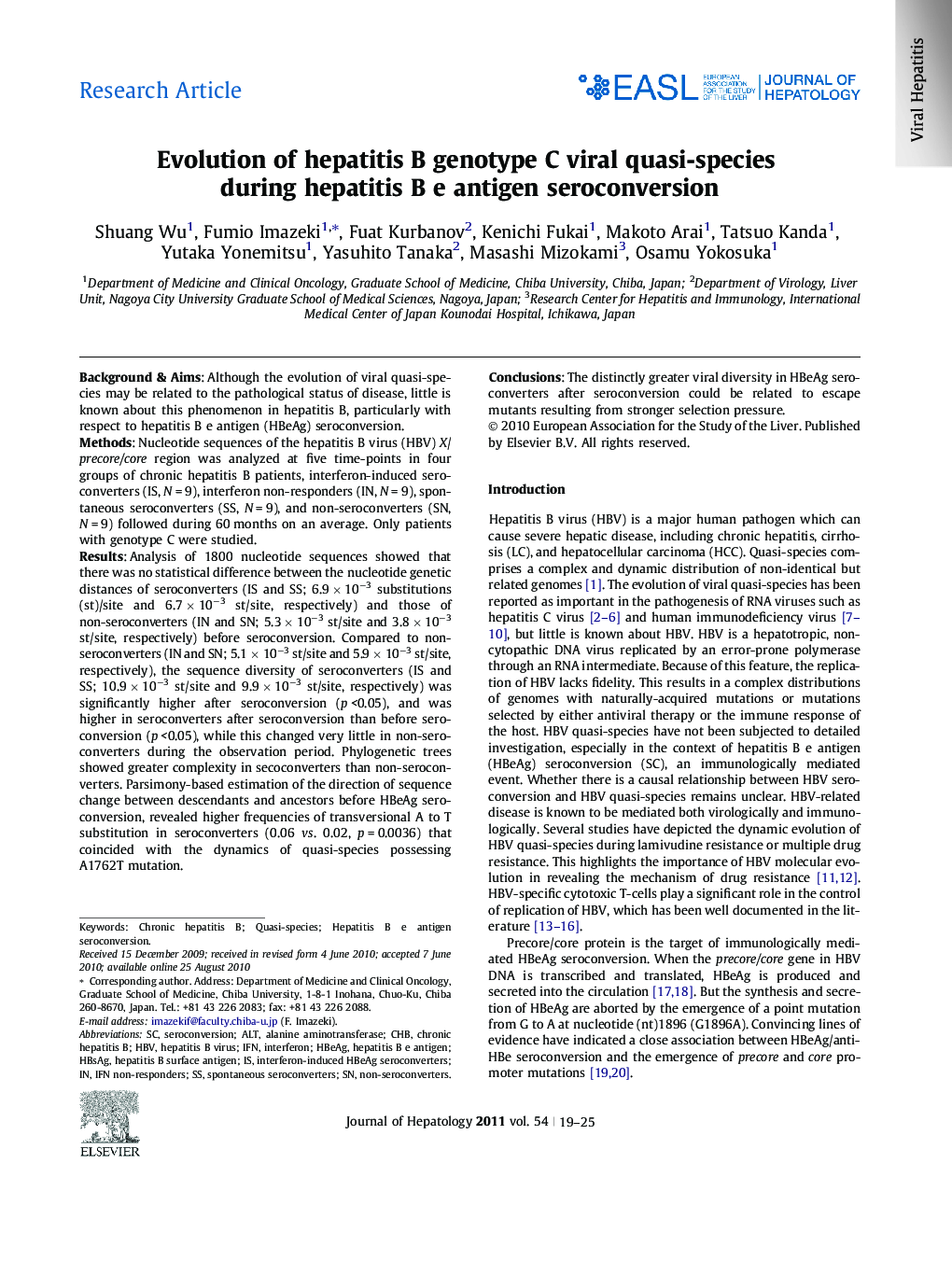| Article ID | Journal | Published Year | Pages | File Type |
|---|---|---|---|---|
| 6107439 | Journal of Hepatology | 2011 | 7 Pages |
Background & AimsAlthough the evolution of viral quasi-species may be related to the pathological status of disease, little is known about this phenomenon in hepatitis B, particularly with respect to hepatitis B e antigen (HBeAg) seroconversion.MethodsNucleotide sequences of the hepatitis B virus (HBV) X/precore/core region was analyzed at five time-points in four groups of chronic hepatitis B patients, interferon-induced seroconverters (IS, N = 9), interferon non-responders (IN, N = 9), spontaneous seroconverters (SS, N = 9), and non-seroconverters (SN, N = 9) followed during 60 months on an average. Only patients with genotype C were studied.ResultsAnalysis of 1800 nucleotide sequences showed that there was no statistical difference between the nucleotide genetic distances of seroconverters (IS and SS; 6.9 Ã 10â3 substitutions (st)/site and 6.7 Ã 10â3 st/site, respectively) and those of non-seroconverters (IN and SN; 5.3 Ã 10â3 st/site and 3.8 Ã 10â3 st/site, respectively) before seroconversion. Compared to non-seroconverters (IN and SN; 5.1 Ã 10â3 st/site and 5.9 Ã 10â3 st/site, respectively), the sequence diversity of seroconverters (IS and SS; 10.9 Ã 10â3 st/site and 9.9 Ã 10â3 st/site, respectively) was significantly higher after seroconversion (p <0.05), and was higher in seroconverters after seroconversion than before seroconversion (p <0.05), while this changed very little in non-seroconverters during the observation period. Phylogenetic trees showed greater complexity in secoconverters than non-seroconverters. Parsimony-based estimation of the direction of sequence change between descendants and ancestors before HBeAg seroconversion, revealed higher frequencies of transversional A to T substitution in seroconverters (0.06 vs. 0.02, p = 0.0036) that coincided with the dynamics of quasi-species possessing A1762T mutation.ConclusionsThe distinctly greater viral diversity in HBeAg seroconverters after seroconversion could be related to escape mutants resulting from stronger selection pressure.
